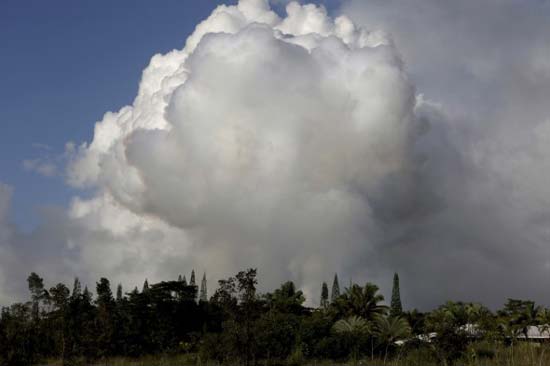Is the Ring of Fire more active with volcanoes, earthquakes than usual?

Reports of earthquakes and volcano eruptions in regions along the Ring of Fire might lead some to believe that the level of activity in recent months is above average.
The approximately 25,000-mile-long, horseshoe-shaped Ring of Fire outlines the Pacific Ocean and is known for its chain of volcanoes and as the location for 90 percent of Earth’s earthquakes.
In February, Indonesia’s Mount Sinabung volcano exploded, coating nearby villages in ash and shooting a massive ash cloud about 3 miles up into the air. Not long after the eruption, a deadly magnitude-7.5 earthquake shook Papua New Guinea with what was considered its worst quake in a century.
Experts say that these occurrences, along with a string of other recent earthquakes and volcanic activity, aren’t anything out of the ordinary for the notably active Ring of Fire.
“There are always one or a few volcanoes acting up somewhere along the Ring of Fire, and there are frequent earthquakes,”said Dr. Greg Valentine, geology professor and director of the University at Buffalo's Center for Geohazards Studies.
“The main thing that has changed recently is that we can measure these things all over the world and disseminate the information to the public quickly,”Valentine said. Previously, he noted, only big earthquakes and volcanic eruptions were noticed and made the news.
Dr. Stephen Malone, research professor emeritus at the University of Washington, conducted several different searches of earthquake activity, checking for the number of occurrences above a threshold magnitude of 4.5 both worldwide and in the Ring of Fire, also known as the circum-Pacific tectonic belt.
Malone found no unusual number of occurrences in the previous one or two months, he told AccuWeather.
“In fact, the number of really large events [with a magnitude greater than 6.5] over the past two months is quite a bit below the average over the past several years,”he said.
In the case of volcanic activity, reviewing the Smithsonian/ USGS Weekly Volcanic Activity Report can be helpful, Malone recommended. A glance through this data set indicates a large variability by week and seems to show that that anywhere between 10 and 50 volcanoes are reported to be active in any given week, with anywhere between three and 11 volcanoes being newly active in that week.
“Over the past couple of months, there have been between 15 and 22 total active and between three and eight new volcanoes,”Malone said.
“In the cases of both earthquakes and volcanoes, most of them do occur in the Ring of Fire, as is usual."
The recent volcanic and earthquake activity occurring in Hawaii following the eruption of Kilauea have prompted fears of Ring of Fire activity along the western coast of the United States, according to a recent news report.
However, Hawaii is not part of the Ring of Fire, which occurs around the edges of the ocean crust plates, explained Valentine.
“It is instead an isolated volcanic system in the middle of an ocean plate,”Valentine said.
“It is caused by a hot spot, a place where hot material from the mantle is rising.”
The current activity in Hawaii is a continuation of an eruption that began in 1983, according to Valentine.
There may be geophysical reasons why more volcanic and earthquake activity may cluster in space and time, Malone said.
“[However], with the natural variability in such activity, it is hard to be convinced that minor groupings here or there have any geophysical significance,”he added.

